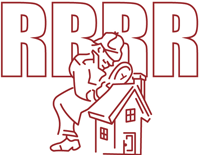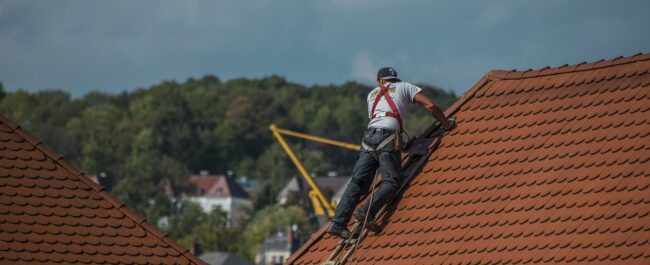Repointing Roof Tiles Guide
Have you noticed unusual marks on your ceiling recently? Many homeowners understand that broken, cracked and loose tiles can all cause significant water damage to the beams and ceilings of their home if not repaired, however many homeowners don’t realise that damaged pointing on your roof can also cause a lot of damage.
So, what is roof pointing or bedding? It is simply a mix of sand and cement or mortar that fixes the ridge capping to the ridges. It seals the gaps and provides protection from the ingress of water during storms and rain.
Due to weather and age, the pointing eventually wears down, leaving small gaps where water can get into the roof space.
How is a Roof Repointed?
This is certainly a job best left to the professionals. Working on a roof can be dangerous and when it comes to repointing, if you don’t know what you are doing, you could cause more damage.
Generally, the roof will be washed down to remove moss, algae and lichen. From there damaged tiles are removed, and the bedding is cleaned out with a steel brush. This removes any loose particles, leaving only the solid material. New bedding is applied to the roof tiles that will be covered by the ridge capping with a ridge rack used to keep the ridges straight. Once the bedding has been applied and dried, the flexible pointing is applied to the sides of the ridge, and where the ridges overlap. This means your roof is now secure from wind and is again waterproof.
Advantages of Roof Repointing
One of the biggest advantages of roof repointing is protecting your home against the risk of water damage and mould growth. Removing mould is costly, time consuming and can become a health risk long before you know it is growing in your home. By ensuring that your home has no leaks, you can prevent any health issues that may present in the future.
Besides preventing mould growth, having your roof repointed can prevent woot rot, which eventually could affect your supporting beams and joists. In turn, this could cause your ceiling to collapse.
Brisbane, as many homeowners very well know, can experience days and days of rain at a time – the last thing you want to be worried about is whether your property is slowly and silently being damaged through an issue that can be fixed easily and relatively quickly.
How to Know if Your Roof Needs to be Repointed
There’s no one rule when it comes to repointing your roof, however if your home was built prior to 1995, you may still have cement mortar pointing. If your home was built before this time and you haven’t had your pointing replaced, it’s well worth having your roof inspected and the pointing replaced if required.
Apart from age, there are numerous signs that your roof is damaged and that it may need repointing. One of the first things people notice is loose tiles after a storm – you may notice a tile is no longer in the correct place or in place at all. Outside of this, the following signs are a good indication, you need to have your roof inspected:
- Leaks and water marks
- Excessive moisture
- Granules of cement in your gutter (noticeable when you have your gutters cleaned)
It’s important to remember that pointing is essential in ensuring your roof tiles stay in place. If you notice tiles starting to move around, give Brisbane Tile Roof Restorations a call to organise an inspection of your roof.
Repointing is necessary for home maintenance and your roof must be checked regularly to help protect your home from damage. Give our experienced team a call today.

